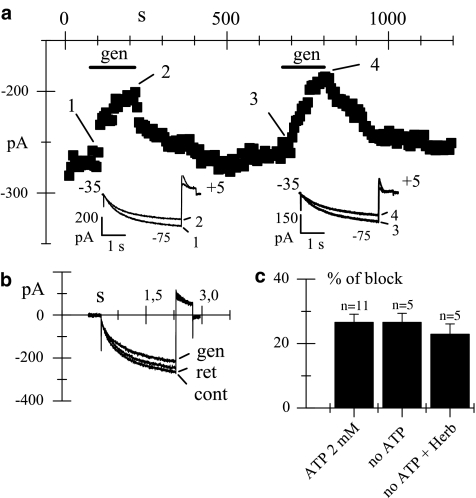Figure 2.
Action of genistein on whole-cell If in the absence of intracellular ATP and PTK activity. (a) Time course of steady-state If amplitudes at −75 mV (holding potential, −35 mV); horizontal bars indicate duration of genistein superfusion (gen); genistein was applied twice at an interval of 10 min. Drug-induced If reductions were 26.9 and 28.8% during the first and second exposures, respectively. Sample If traces in control conditions (1,3) and during superfusion of genistein (50 μM; 2,4) are shown in the insets. (b) Current traces recorded at −95 mV in control condition (cont) was started (gen) 9 min after superfusion of genistein (50 μM) and after washout (ret). The pipette solution contained regular intracellular solution plus herbimycin (35 μM) and no ATP. (c) Graph bar showing the genistein-induced mean (±s.e.m.) If reductions obtained with a regular intracellular pipette solution containing ATP 2 mM, no ATP, and no ATP plus herbimycin 35 μM; blocks were 26.6±2.5% (n=11), 26.6±2.8% (n=5), and 22.9±3.2% (n=5), for the three conditions, respectively. All recordings started at least 6 min after establishing the whole-cell configuration. Blocks were not significantly different.

